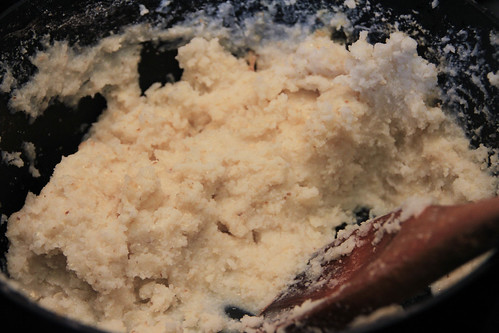Did you know a country just changed its name? The king of what had hitherto been Swaziland, Mswati III, declared two in April that, in honor of 50 years of independence, it's now the Kingdom of eSwatini. (Apparently the change was in part motivated by confusion with Switzerland, while some accuse the king of distracting people from his profligate lifestyle with his 16 wives, as well as a sky-high AIDS infection rate.) While the adjustment is a victory for defenders of camel case, the news was a bit inconvenient for those of us who are partway through a rambling effort to cook a meal from every country in alphabetical order. Since we'd already long passed the E's, and it will no longer be there when we get to S, according to our unwritten bylaws, we had to cook it next.
Researching this meal wasn’t easy. While I found some lists of typical foods, and some useful descriptions, there’s very little in the way of actual recipes online. I pulled from Zimbabwean, South African, and pan-African sites, as well as an Italian-produced local women’s newsletter, but I’m sure I messed up somewhere along the way. However, I think I covered the major foods — corn three ways (fresh, cracked whole, and flour), pumpkin two ways (fruit and leaves), and beans — but I stayed away from anything dairy since they all required leave-it-overnight fermentation that I wasn’t willing to experiment with this time around. (I haven’t had the best luck with spontaneous, “let’s see what bacteria lands on it” fermentation in my kitchens.)

It was my birthday meal, so I invited my favorite people in Portland. Around the table were Quinn, Laura, Drew, Craig, Haley, Emily (and Sofia!), Taylor, Chelsea, and Deena.
Avocado
What’s clear is that Swaziland grows avocados. What I couldn’t find how, if at all, they eat them. There’s a “Swazi avocado salad” that’s all over the web, but I’m skeptical since it doesn’t match anything else I’ve seen. So we ate it straight with a squeeze of lime. *shrug*
Umbidvo | Pumpkin leaves | Recipe

I’m always excited when presented the opportunity to use a new part of a plant I’d never considered. While I’d seen squash or pumpkin “tips” in some other African recipes, it was never at the right time of year, but summertime presented the right opportunity. I even kept some non-fruiting squash plants in the yard until this moment so I could use the leaves. I stripped every squash and zucchini plant of its tender leaves, and even found a supplemental bunch at the farmer’s market at the little Asian vegetable stand (who knew!)…and it all cooked down to barely enough for each person to have a taste! It was delicious, with a pinch of baking soda serving to break down the leaves and also giving a distinctive sorta-salty taste. But if you’re going to make this, make sure you have a lot of leaves on hand, because it cooks down dramatically. (It appears that the version with ground peanuts is more common than without, but since there are peanuts in the next dish, I left them out here. Maybe that was a mistake too!)
Sentangabomu | Pumpkin with fresh corn and peanuts | Recipe (page 41)

This is one dense dish, and it’s quite tasty and healthy too. The sweet fresh corn goes really nicely with the pumpkin, and it’s a complex texture with the pumpkin being smooth, the corn being just a bit toothsome, and the peanuts adding a rich, oily mouthfeel. I could see this being an excellent food for kids.
Sishibo senkhukhu | Chicken stew | Recipe

I saw discussion of meat stew being a food for festive times, but couldn’t find a single recipe. So I found this one from adjacent Zululand in South Africa. It’s possible these flavors are more complex than you’d find in eSwatini, as I just have no idea if curry powder made it that far. But all the same, it was a good and tasty dish, a nice balance of meat and veggies.
Sitambu nemabhotjisi | Cracked corn and beans | Recipe

I’m pretty sure the siSwati word sitambu comes from the Afrikaans stamp, which means the same thing as in English. (But in English, the same food is confusingly known by a very similar word, samp, which itself comes from a Native American word.) In any event, it’s made from dried, whole-kernel corn that’s crushed (or, you know, stamped) into a few pieces per kernel. You cook it just as you would beans—soak overnight and slow simmer. So it’s no wonder that they’re often cooked together. And as it so happens, they taste good together.
Pap | Cornmeal mush

It’s redundant to have this along with the sitambu, but I felt I had to get the full trifecta of corn in here. As with so many African countries’ food, it’s the most common dish, simply mixed with water until it’s thick enough to be made into a ball.